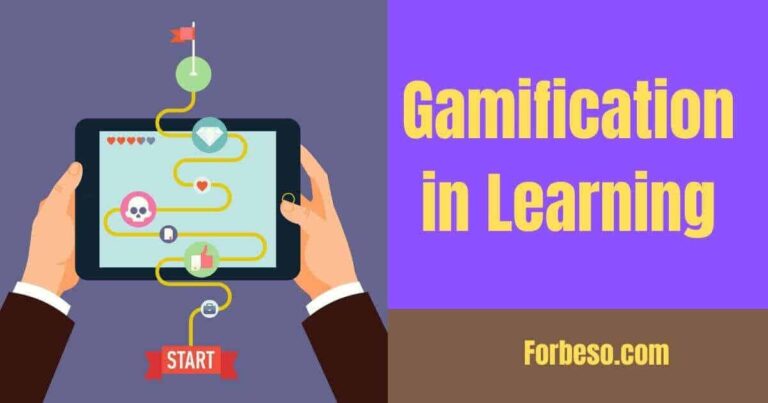Learning management systems (LMS) have become a crucial tool for educators and organizations. It provides training and learning programs for students, employees, and customers. However, even the best-designed courses can often fail to engage learners or lead to measurable progress. One of the most effective approaches for enhancing learner engagement is gamification – The use of game mechanics in non-game contexts. We will explore how gamification can be implemented in an LMS and how it can enhance the learning experience.
Understanding Gamification
Gamification simply refers to integrating elements of gameplay into any non-gaming context, such as education or workplace training. It is not about creating games but using game design principles to encourage user interaction and engagement. Gamification relies on achieving objectives through a ‘game-mechanic’ approach rather than traditional forms such as multiple-choice exams or lengthy readings. This creates an engaging environment full of incentives. It encourage users to complete activities, receive awards, and unlock achievements – things that would increase their overall grade or recognition.
Why Gamify eLearning?
Learners today expect immersive experiences that excite them mentally while they are learning. Gamifying education satisfies these expectations by making content delivery interesting through point accruals and leaderboards, while also improving communication. Blackbaud reviews highlight the efficiency of the platform when it comes to improving organizational processes and communication. This approach incentivizes consumers to work harder towards achieving learning objectives set out throughout lessons, consciously and systematically saving points being rewarded once completed.
With a gamified LMS, users feel motivated to complete every assigned task due to receiving instant feedback, such as scorekeeping. This measures knowledge retention from specific topics covered within modules and lessons. It is ultimately helping organizations achieve higher performance by increasing active participation among employees. This results in substantial benefits associated with workforce growth rates, increased efficiency, and lower turnover rates, as staff are engaged using interactive strategies made available via thought-provoking EdTech interactions. Custom leaderboard dashboards provide insight into individuals’ progression among peers.
How Does Gamification Work In An LMS?
There is an array of game mechanics used in gamification. Some elements are commonly utilized in LMS gaming patterns, including ranks and levels, badges, points, and achievement levels, challenging users to put forth additional effort beyond what would have otherwise been expected.
Let’s take a look at some ways that gamification can be integrated into LMS:
Storytelling
Great storytelling plays a significant role when it comes to gamified learning modules – crafting entertaining storylines for course scenarios adds engagement by creating emotional investments and intrigue among students/org members honing their skills. It’s best to script out the plot of a specific level with predefined objectives, making it possible for learners to follow along with an engaging narrative. This provides opportunities to implement big ideas for retaining information and enable a better understanding of the topics covered within the lessons.
Competitions And Leaderboards
Competition is among the most effective forms of incentives use within workplace EdTech training environments, with leaderboards motivating team members to work towards attaining goals. Various KPIs (Key Performance Indicators) measure using score tracking systems, such as monthly and quarterly target completion rates under time pressures. These provide new stimuli while bring an environment conducive to staying abreast of necessary skills. It is for relevant in-house positions or remote work settings. This approach essentially allows recognition and distinction among high-performing employees from others in the same area, reducing staff turnover and the need for frequent replacements. It also generates wider engagement through incentivizing via rewards and incentives earned, offering workers immediate feedback embedded in interactive e-learning scenarios on busy workdays without any inhibitions from other obligations or impacting job productivity.
Avatars
Gamification also allows the creation of customizable avatars/digital personas providing drill-through experiences replicating everyday day work-life situations and overcoming common issues faced, reducing absenteeism/turnover rates. This level creation engages users, furnishing students with sophisticated simulations representing real-world jobs where they have to tackle tough tasks via gamified processes. As such, it greatly enhances problem-solving and critical thinking capabilities, streamlining the efficacy of job duties assigned.
Goal Setting
Gamifying learning modules with goal setting and knowledge checks enables learners to keep track of their progress, especially as applicable in case studies and similar scenarios replicating daily work lives. This allows real-time knowledge acquisition, creating a sense that the course material being mastered is working in tandem with learning outcomes and professional goals. Read about Ztec100.com Tech Health and Insurance now.
Conclusion
Gamification has become an integral part of eLearning that engages students, employees, and consumers. It is helping them learn new skills and apply them within their current and future positions. It is essential to take time to choose game mechanics. So, it support unique LMS goals coupled with clearly defined objectives to ensure their effectiveness. These challenge end-users while fostering different ways of highlighting success metrics. This approach measures what companies and education providers have achieved by implementing gamified EdTech modules. It is generating benefits that ultimately lead to a high-performing collaborative workforce. By continuously upskilling and attaining certifications for long-term growth, they contribute significantly to the success of their current companies as well as future ones.
